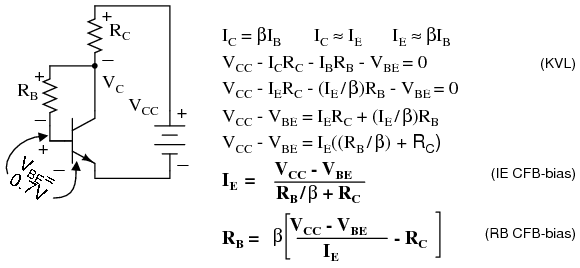

The transistor will be used as a "Common Base" amplifier circuit for the oscillator part. I we will begin with frequency (C1), and also workout the inductor, since this component is also related to frequency. One capacitor controls the frequency, and the other controls the level of feedback. The first set of capacitors are the radio capacitors, of which there are two. The next task is to add capacitors to the DC project. I have already entered the results of the previous calculator, but change them manually if you want. R1 and R2 must therefore each be half this value = 45K. In more critical circuits use a higher value, such as 10 times, but I think a lot about battery drain so I choose 4x. R1 and R2 must therefore burn at least 4-times this figure. In our case it is about 25uA (0.000025A). The transistor base current is equal to the emitter current divided by the transistor current gain (hfe).įormula for calculating TR1 base current: R1 and R2 must therefore divide the battery voltage by two, without the voltage falling much due to the transistor base current.

But we will base our calculations on 200, mainly because people will try to use other transistors without changing the values. The BC547B transistor current gain (hfe) is about 300, according to the specifications, but I find that it is typically 350 or more. You can use other values, such as to set the base to only a quarter, but the complete transmitter will be more sensitive to supply voltage changes, and the modulation sensitivity will also be more variable. The supply divider resistors feeding the base of the transistor are of equal value, so that the transistor base is fed with half the supply voltage. You can use this formula to re-calculate the component values for other supply voltages.įormula for calculating emitter resistor: Enter the battery supply voltage (Vbatt) and your chosen transistor standing emitter current (Ie). If you want an on-line formula then here it is. I select the next lowest common value of 330 Ohms because the battery will have a tendency to fall, not rise. Re is therefore equal to E / I = 3.8 / 0.01 = 380 Ohms. The emitter voltage is equal to the base voltage (Vbatt = 9v / 2 = 4.5v), minus 0.7v = 3.8v. The emitter resistor Re is therefore selected to give an emitter current of 10mA (0.01A). The transistor will not get hot, but there is enough current to allow it to work, but not enough to flatten a battery in a couple of hours.

The BC547 is rated at 300mA, so 3% of this is a nice general figure.

I will also run the transistor at about 10mA (0.01A). Small voltage changes will therefore NOT affect the transistor capacitance changes by much. In the interest of stability I will run the transistor base at 50% of the supply voltage. This gives us a current amplification, but no voltage amplification. The basic circuit is an emitter follower transistor amplifier. So I will use a 9v battery for this project (calculate a little lower than 9v). Another consideration is the box - many commercially available hobby boxes (enclosures) have an integral 9v PP3 type battery compartment. Small voltage across a transistor cause the internal CB capacitance to rise, in effect it is a small varicap diode. Nearly all my circuits are drawn with a positive and negative supply rail connected to a supply, of some description. Some of the formulas given are just rough, in the interest of simplicity. So I shall start with a simple one-transistor device and build up the circuit. Of course, this page is not for the experienced constructor, but I am please that so many people seem to take an interest in my homepages and the techniques I use. Ok, this I can do, and I shall try to give clickable calculations whenever possible. This has become a sort of regular periodic question - " Harry can you please explain how the FM Wireless microphone functions?", ".


 0 kommentar(er)
0 kommentar(er)
